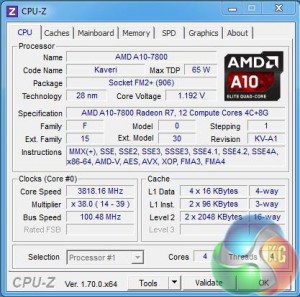
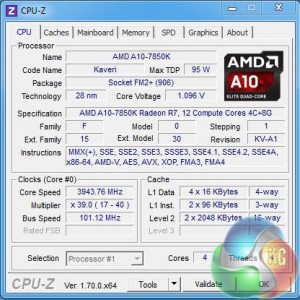
Both Kaveri APUs use 28nm technology. In the top right corner you can see the A10-7850K has a 95W TDP while the new A10-7800 starts life at 65W, although it can be adjusted down to 45W, however this is not reflected in CPU-Z.
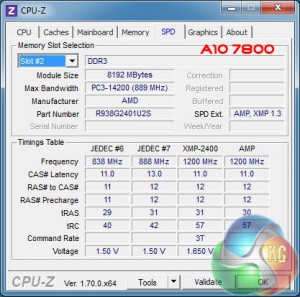
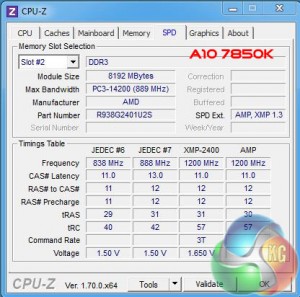
The maximum AMP speed for AMD Radeon R9 memory is 2400MHz, depending on the spec of the APU memory controller.
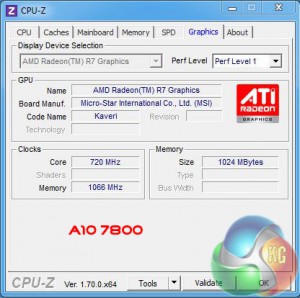
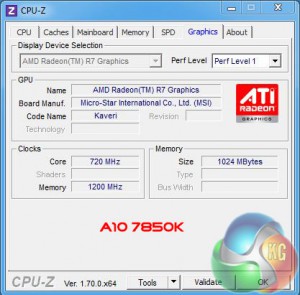
The graphics core is the same in both Kaveris with eight graphics units (512 shaders) running at 720MHz. In both cases there is 1GB of allocated system memory but of course the A10-7850K has the ability to run the memory faster and that should deliver more performance.
Graphics
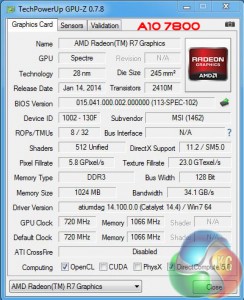
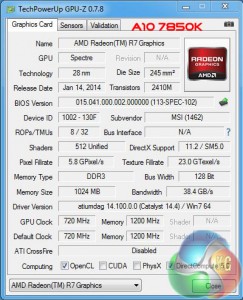
GPU-Z does the maths for us. With a 128-bit memory controller the A10-7800 has a graphics memory bandwidth of 34.1GB/sec while the A10-7850K has 38.4GB/sec.
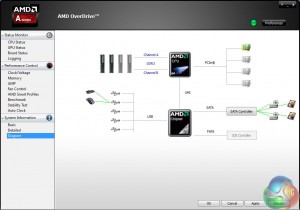
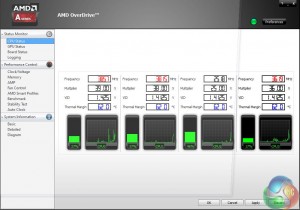
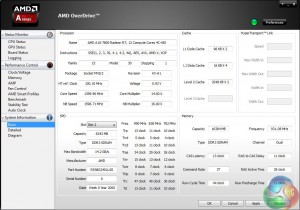
AMD OverDrive does a decent job of detailing the components in your system, showing the layout of the connections and reporting voltages and clock speeds. A few years ago this information would have been golden but these days you get a similar degree of detail from the UEFI set-up screen of any decent motherboard. Nonetheless AMD has done a decent job with OverDrive and it is a useful tool in the armory of the home PC builder.
 KitGuru KitGuru.net – Tech News | Hardware News | Hardware Reviews | IOS | Mobile | Gaming | Graphics Cards
KitGuru KitGuru.net – Tech News | Hardware News | Hardware Reviews | IOS | Mobile | Gaming | Graphics Cards


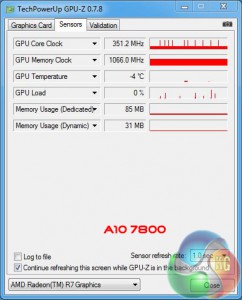
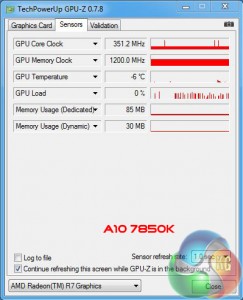
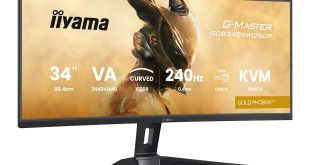
Created a profile just to let you how helpful your review and research was to me. Helping a noob friend pc game for cheap.
Thanks a bunch.